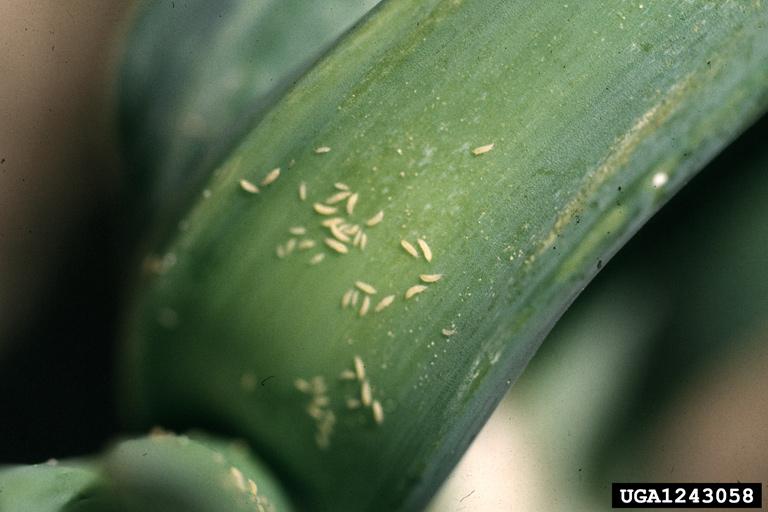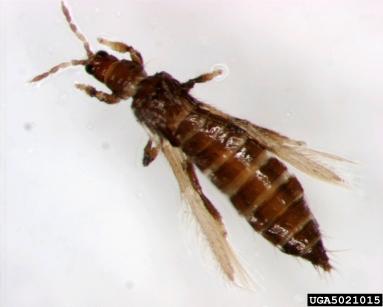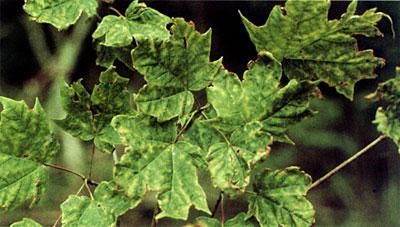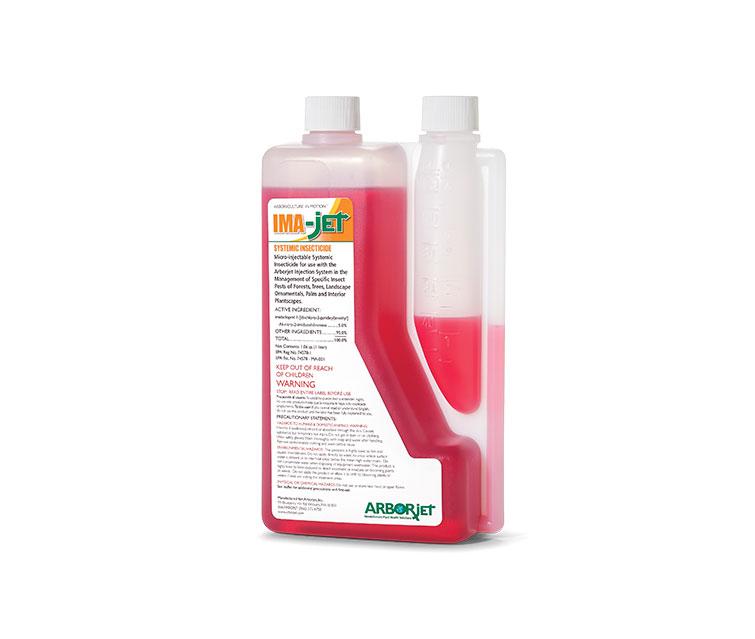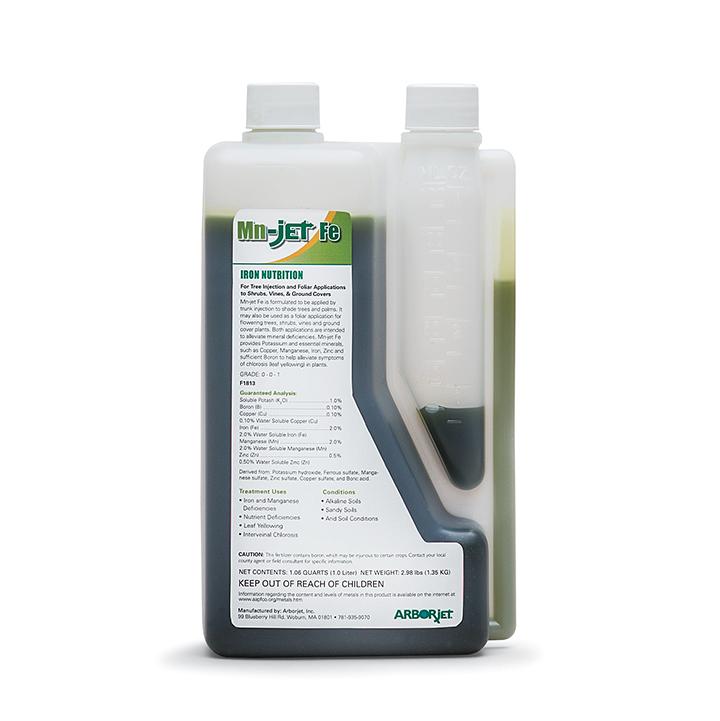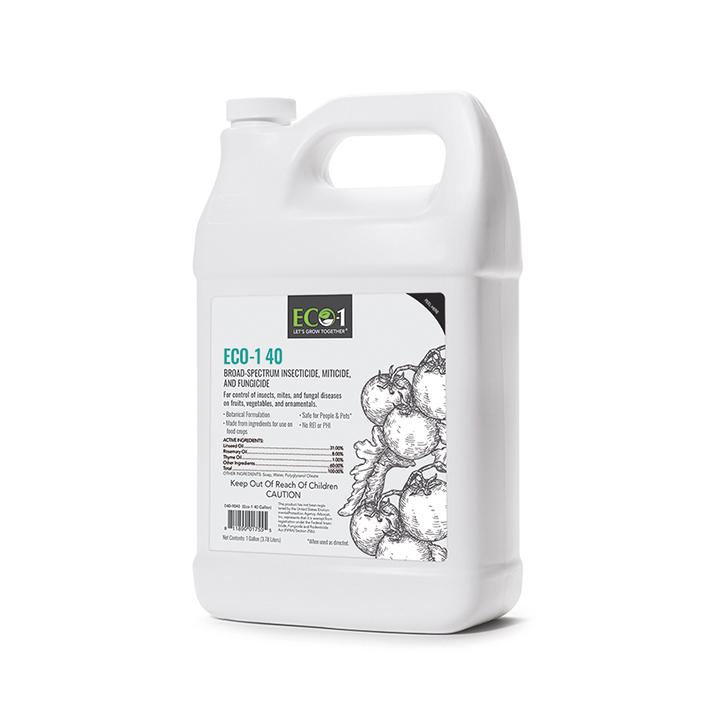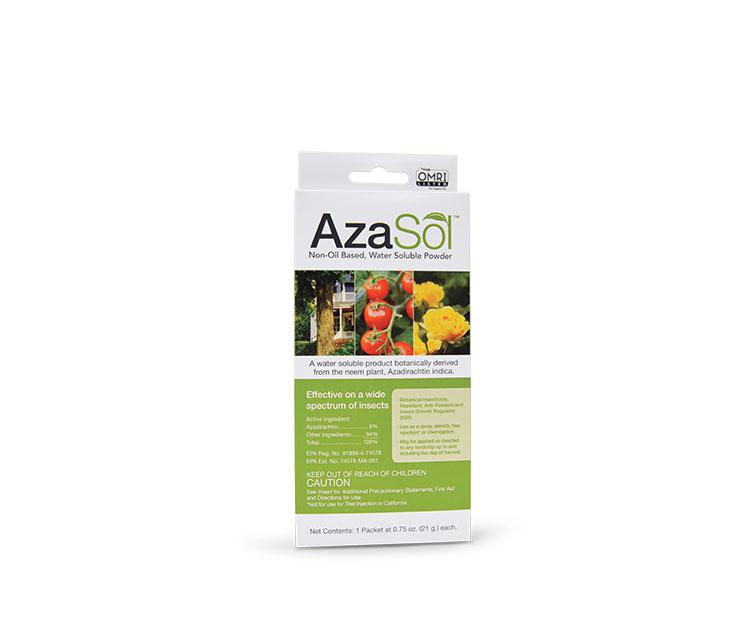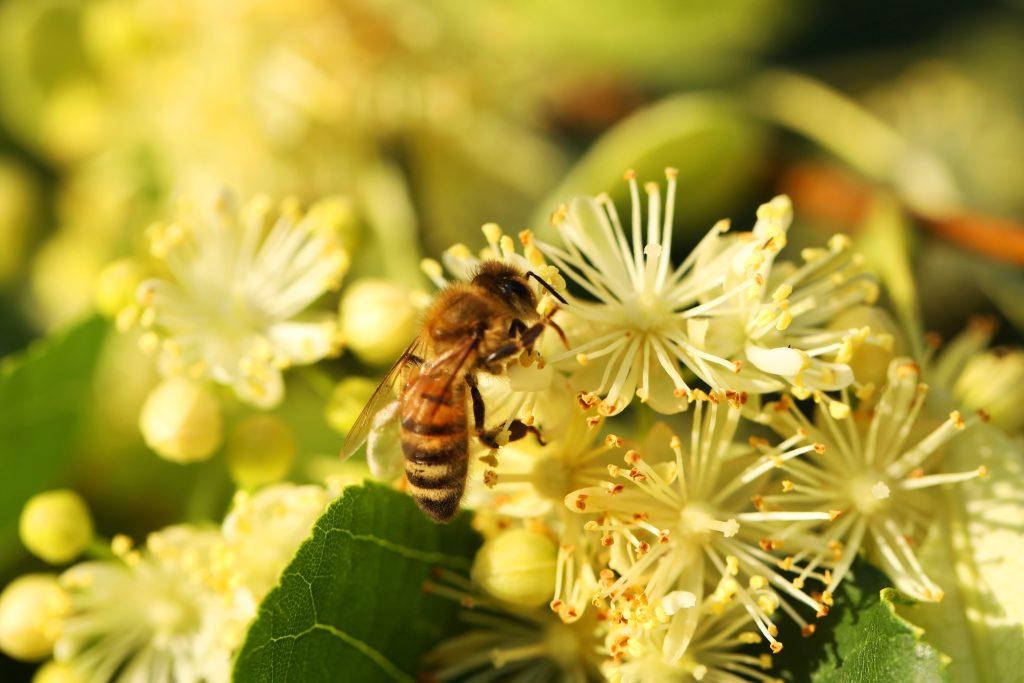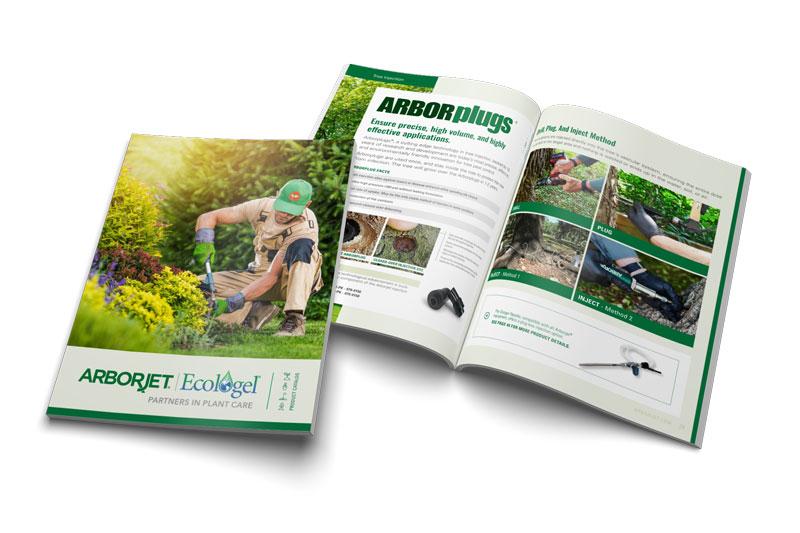Thrips
Thrips (Thysanoptera) are slender, tiny insects that often have fringed wings and are generally 1 mm or less in size.
Nymphs are elongate, lack wings and range in color from off-white or yellow to brown or black. Most thrips feed by rasping the surface of leaves and flowers and suck up the juice as it oozes out. Others can cause leaf distortions or “galls” where they continue to feed and lay eggs. Thrips can have several generations (egg to adult) per year so these pest outbreaks can be very damaging. Although they are not good flyers they can be carried great distances by the wind. Given certain conditions, many species can amass a large population and travel in swarms.
Common Symptoms
Initial feeding symptoms on leaves appear as pale spots or stipples from the piercing-sucking mouthparts. At times, black feces will be present next to whitish feeding scars, and this sign will help distinguish from damage caused by aphids that do not leave hard fecal matter. Certain species that cause galls, such as Myoporum and Cuban Laurel Thrips, can cause all of the new growth to appear tightly rolled or pod-like at branch tips.
Treatments
Thrip infestations can be swift and fleeting in landscape situations and may not always require an insecticide unless feeding activity is prolonged. Begin treatment with IMA-jet® or ACE-jet™ as soon as thrip damage is positively confirmed and consider a sequential application with Mn-jet Fe™ or PHOSPHO-jet™ to assist with tree recovery. In the case of chemical-sensitive areas, the use of Eco-1 40 and AzaSol® will provide suppression on a two-week application schedule.
When To Treat
An IMA-jet treatment early in the lifecycle of thrips is very effective and provides season-long control. Later season infestations or higher populations that require rapid control respond well to ACE-jet unless growing conditions extend more than 60 days, in which case a combination of ACE-jet followed by a low-medium rate of IMA-jet will provide good control. Generally, the best seasons for injection are spring and fall, since uptake occurs when trees are transpiring.
If using Eco-1 40 or AzaSol, treatment should be done on a two-week schedule.
What To Expect After Treatment
IMA-jet treatment will stop feeding activity within one to two days for common leaf-feeding thrips. For gall-forming thrips, use the highest rate of IMA-jet as soon as possible in the spring to encourage thinning to assist in the removal of infestation centers.
References And Photo Credits
Main photo of onion thrip taken by Whitney Cranshaw, Colorado State University, Bugwood.org
Adult pear thrip taken by Pennsylvania Department of Conservation and Natural Resources – Forestry Archive, Bugwood.org
Pear Thrips Damage on Maple taken by Margaret Miller, USDA Forest Service

